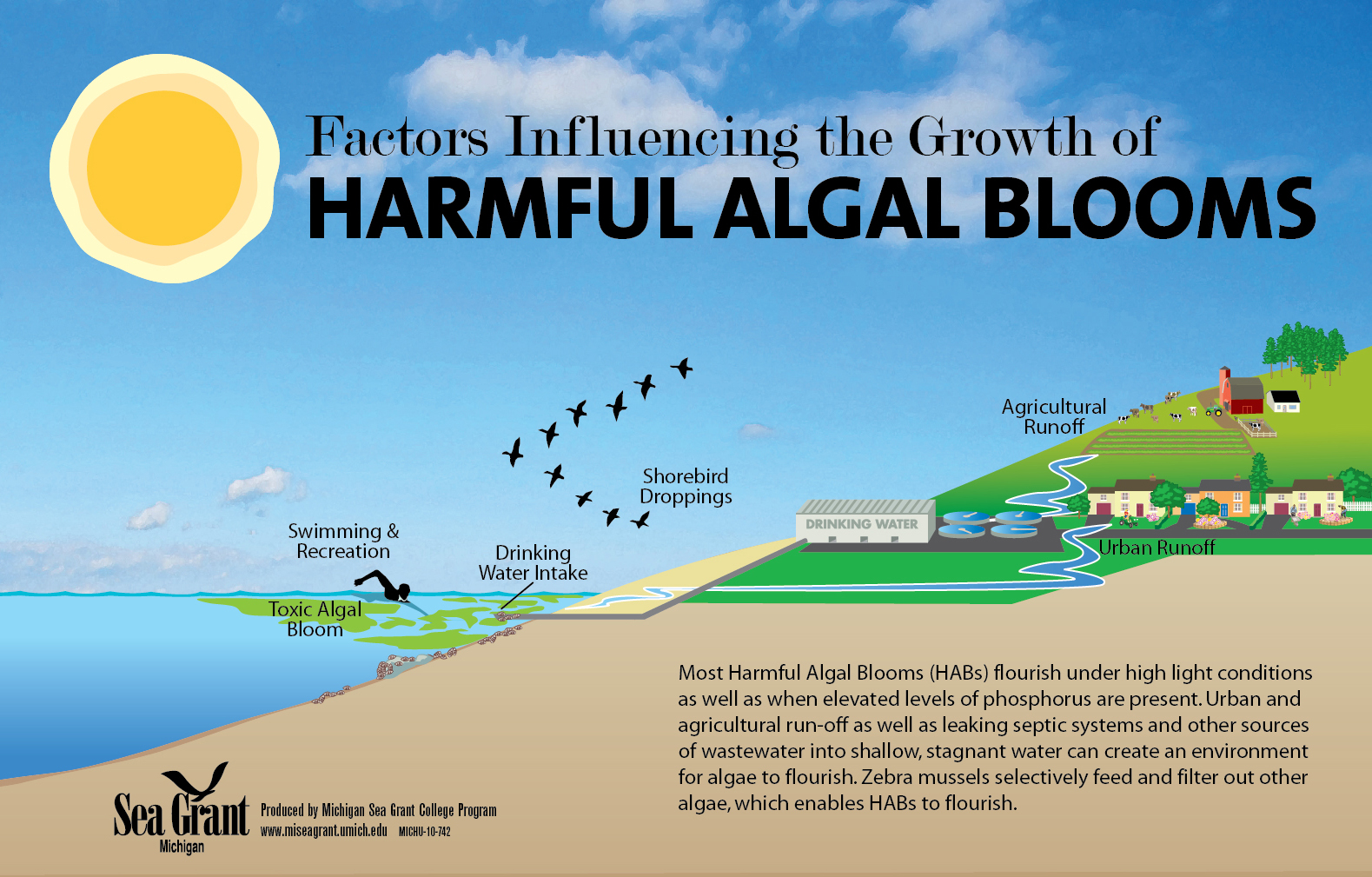Online dashboard explores HABs and community health
Interactive online dashboard helps visualize community health risks in three lenses.

Algae are tiny plants that grow naturally in water (some bacteria are also referred to as algae). When their populations grow to a point where they are visible to the eye, they are considered an algal bloom. Most algal blooms are harmless but sometimes they contain toxins that can be harmful to humans and animals. This type of bloom is called a harmful algal bloom or HAB.
A new online dashboard has been developed to help scientists, policy makers and the public understand and predict water quality and community health data as it relates to harmful algal blooms. The dashboard primarily visualizes data for four counties adjacent to Western Lake Erie. A fact sheet about the dashboard also is available.
On the dashboard, viewers can explore community-level health risks from HABs related to:
- Sensitivity to HABS resulting from underlying health status;
- Adaptive capacity if exposure to a harmful algal bloom occurs; and
- Overall exposure to water quality impairments.
This project was supported with funding from the Bowling Green State University Great Lakes Center for Fresh Waters and Human Health.
Michigan Sea Grant helps to foster economic growth and protect Michigan’s coastal, Great Lakes resources through education, research, and outreach. A collaborative effort of the University of Michigan and Michigan State University and its MSU Extension. Michigan Sea Grant is part of the NOAA-National Sea Grant network of 34 university-based programs.
This report was prepared by Michigan Sea Grant under award NA180AR4170102 from the National Oceanic and Atmospheric Administration, U.S. Department of Commerce through the Regents of the University of Michigan. The statements, findings, conclusions, and recommendations are those of the author(s) and do not necessarily reflect the views of the National Oceanic and Atmospheric Administration, the Department of Commerce, or the Regents of the University of Michigan. This project was supported with funding from the Bowling Green State University Great Lakes Center for Fresh Waters and Human Health. (NIH 1P01ES028939-01 and NSF OCE-1840715)



 Print
Print Email
Email

